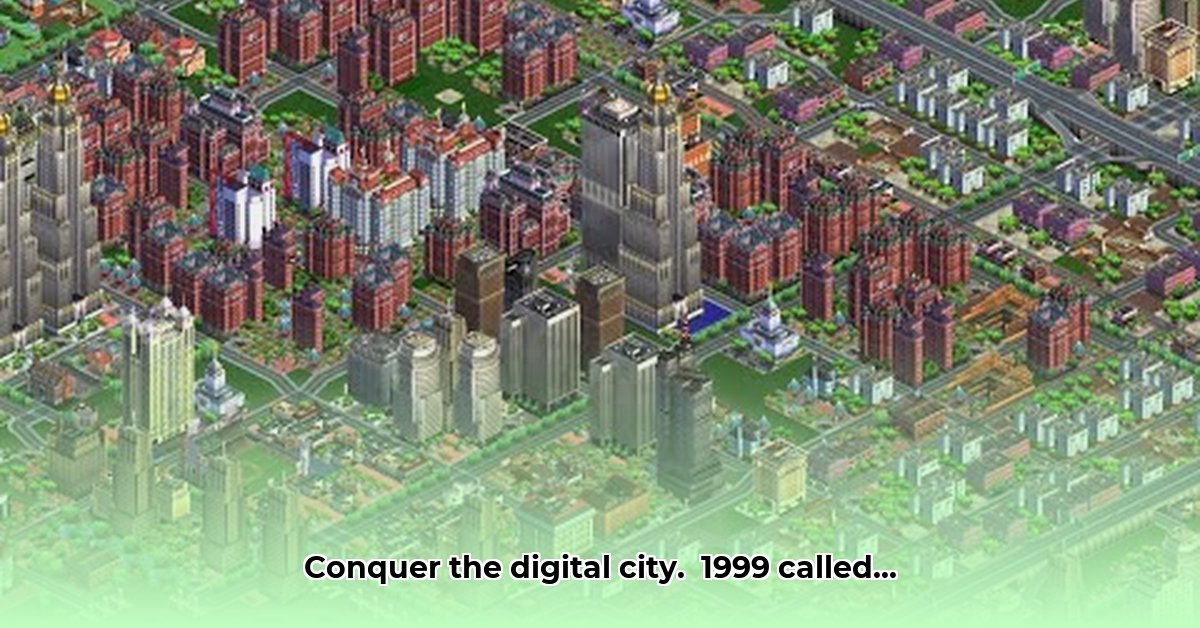
Stepping into SimCity 2000 felt like a quantum leap from its predecessor. The original SimCity, while charming and addictive, offered a relatively simple experience of building and managing a small town. SimCity 2000, however, presented a vastly more complex and engaging challenge, akin to progressing from constructing a sandcastle to designing a sprawling, modern metropolis. This evolution significantly increased gameplay depth and complexity.
The core concept – building and managing a city – remained, yet the methods underwent a dramatic transformation. Instead of simply placing buildings, players became strategic urban planners, designing intricate road networks, power grids, and, for the first time, underground infrastructure like water pipes and subways. These additions weren't mere aesthetic improvements; they were vital, unseen systems that added realism and significant strategic challenges. How did this heightened realism impact player engagement?
A New Perspective: Witnessing Urban Growth
SimCity 2000 revolutionized the visual experience. The original game utilized a simple top-down, pixelated view. SimCity 2000, in contrast, introduced a near-isometric perspective, offering a far more realistic, three-dimensional view, making city planning significantly more intuitive and immersive. This visual enhancement wasn't superficial; it fundamentally changed how players interacted with their digital creations. Did this shift in perspective drastically alter the player's sense of agency and immersion?
The economic model also experienced a significant overhaul. While resource management in the original SimCity was relatively straightforward, SimCity 2000 presented a far more complex financial system. Players had to carefully manage budgets, adjust tax rates, and make strategic decisions regarding energy sources, choosing between polluting coal plants and cleaner, albeit more expensive, nuclear or renewable options. These choices directly impacted the city's health and prosperity, forcing players to weigh environmental sustainability against budgetary constraints.
Uncovering SimCity 2000's Enhanced Features: A Side-by-Side Comparison
The following table highlights key improvements between SimCity and SimCity 2000:
| Feature | SimCity (Classic) | SimCity 2000 |
|---|---|---|
| Graphics | Top-down, pixelated | Near-isometric, detailed |
| Infrastructure | Basic roads, power lines | Roads, highways, power grids, water pipes, sewers, subways |
| Economy | Simple tax system | Complex budget; varied revenue (taxes, utilities); diverse resource management |
| Zoning | Basic residential/commercial | Advanced zoning; specialized areas (industrial, commercial, residential); detailed control over city development |
| Transportation | Limited road types | Highways, railroads, public transportation (buses, subways); improved traffic management |
This table reveals only a portion of the advancements. The enhanced zoning system in SimCity 2000, for instance, allowed for far more sophisticated urban planning. Players could create specialized districts—industrial hubs, residential areas, commercial centers—each with unique requirements and challenges. This level of detail significantly enriched the city management experience.
Mastering Advanced Infrastructure in SimCity 2000
Before exploring SimCity Online, mastering SimCity 2000 is crucial. This classic demands strategic thinking and efficient resource management, skills directly transferable to its online counterpart. This section details how to effectively manage advanced infrastructure in SimCity 2000.
Understanding the Layered City
SimCity 2000 introduced a revolutionary layered city design. This multi-layered approach is key to efficient infrastructure management. Think of it as an underground network beneath the visible city. Managing these interwoven systems—surface streets, underground utilities, and elevated transport—is crucial for a city's success.
Essential Infrastructure Elements
Water and Power: These are fundamental. Ensure adequate water pumping stations and power plants to prevent outages. Proper placement, near residential and industrial zones, is critical. Regular upgrades are also essential.
Roads and Transportation: Efficient road networks are paramount. Begin with a basic grid and plan for expansion. Consider traffic flow—narrow streets in residential areas, wider avenues elsewhere. Incorporate public transportation for sustainability.
Waste Management: Efficient garbage disposal is non-negotiable. Locate dumps strategically, away from residential areas, and upgrade facilities as needed. Neglecting this will lead to unhappy residents and pollution.
Advanced Infrastructure: The Underground: Underground utilities (water pipes and sewage lines) are essential for city health. Careful planning of these unseen networks ensures smooth operation.
Strategies for Success
Strategic Planning: Plan meticulously before building. Consider future growth, zoning regulations, and resource flow.
Zoning: Effective zoning is crucial. Strategically locate residential and industrial zones. Mix zone types to meet diverse needs.
Financial Management: Careful budgeting is essential. Manage taxes effectively, balancing affordability with sufficient income for infrastructure projects.
Disaster Preparedness: Prepare for fires, earthquakes, and other events. Establish adequate emergency services.
Adjust and Adapt: As your city grows, upgrade systems and expand infrastructure.
Key Takeaways:
- Mastering infrastructure in SimCity 2000 requires understanding its layered city design.
- Efficient resource management (water, power, waste) is paramount.
- Strategic planning, including road networks and zoning, is vital for long-term success.
- Adapting to growth and preparing for unexpected events is crucial.
- SimCity 2000's underground utilities add a significant layer of complexity and challenge.
[1] https://dosgamesbrowser.com/simcity-2000/
⭐⭐⭐⭐☆ (4.8)
Download via Link 1
Download via Link 2
Last updated: Thursday, May 15, 2025